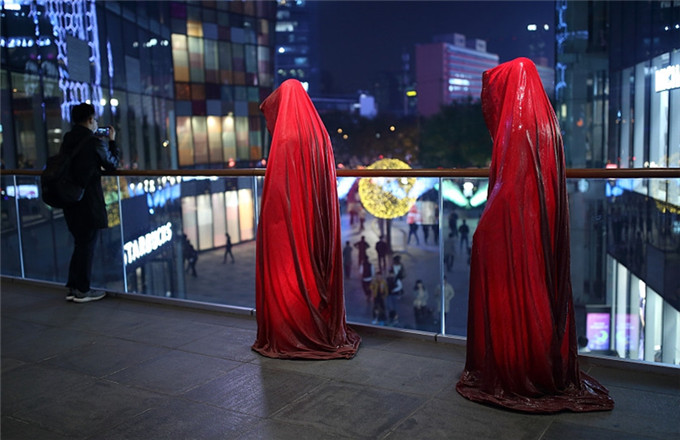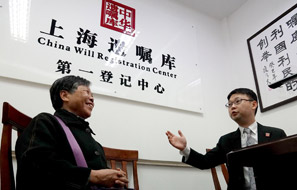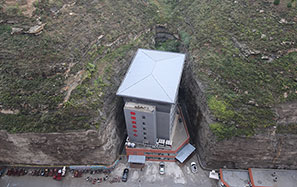Sky gardens hold key to Shanghai's future
Multilayered approach will allow people to navigate the city without having to cross busy roads
When designing the Shanghai Tower, the world's secondtallest building, Daniel Winey, head of the design team, said they wanted the skyscraper to be a symbol of China's past, present and future.
So they came up with a building with a dynamic appearance. "It moves, turns and reaches toward heaven and toward the future," said Winey, chief operating officer at Gensler, the US architecture practice that designed the 632-meter structure.
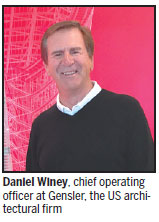
Such a dynamic shape was a recognition of China's re-emergence as a global economic and political power, as well as the re-emergence of Shanghai as one of the primary trading centers in the world, said Winey, who was Gensler's managing principal for the Asia-Pacific from 1998 to 2016.
"Those ideas, together with the concept of moving toward heaven and the future, symbolize where the city has been, where it is now and where it will ultimately go," he said.
The building is the latest addition to the cluster of superskyscrapers in the heart of Lujiazui, Shanghai's financial hub. Winey said the Shanghai Tower also connects with the design of the cluster as a whole.
"The first building, the Jinmao Tower, has more traditional Chinese references in terms of architecture. The second building, the Shanghai World Financial Center, represents the modern day. And our building is one that forms a composition that recognizes the past, the present and the future," he said.
Moreover, there is a certain timelessness to the building, said the 64-year-old designer from the United States.
He said when he first began working on the project, a veteran architect from China said to him, "You are working on the equivalent of the pyramids, the modern-day pyramids."
This comment made an impression on Winey.
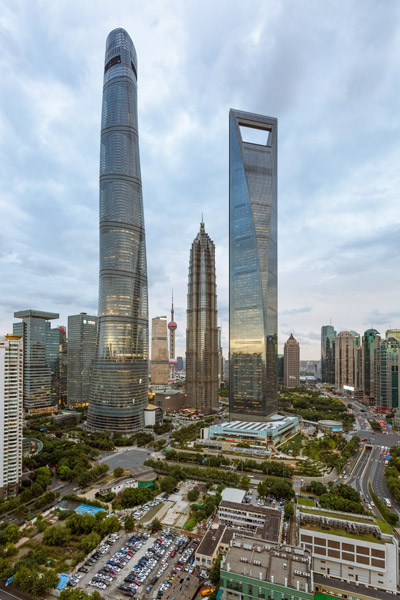 |
|
The Shanghai Tower (left) is the latest addition to the cluster of superskyscrapers in the heart of Lujiazui, Shanghai's financial hub. [Photo/China Daily] |
"I was very much inspired. The building we designed will probably last for hundreds and hundreds of years. His words gave me a sense of the significance of the building, not just from a symbolic standpoint, but in terms of its timelessness," he said.
The Shanghai Tower, second only in height to the 828-meter Burj Khalifa in Dubai, received planning permission in 2006 and officially opened in April. It receives an average of 11,000 visitors daily.
By separating the 124 floors into nine sections and equipping each with at least one "floating lobby" and a sky garden, the building allows users to have meals, shop and meet people without going all the way down to the ground floor, where such facilities are usually located in a tall building.
The idea for the sky gardens derives from the city of Shanghai and its traditional neighborhoods, Winey said.
"Shanghai is a city of gardens. When you navigate in the city, you always discover gardens of various sizes. So when we designed 'the vertical city' of the Shanghai Tower, we wanted it to be a neighborhood where people come across parks as they do throughout the city," he said.
Another key element from the local culture that he brought into the design was to keep harmony with nature, Winey said.
"Most buildings are rigid, but this one is soft. It has curves to it because we want it to connect to nature, which is always soft," he said.
Such a shape also helps the building resist strong winds. "There is a relationship between the building and nature. We don't want to fight with nature. Instead, we want to work with it," he said.
Winey first came to China in 2000, when Shanghai was developing rapidly. "That gave me a sense of commitment to the community, bringing in the expertise that we have around the world and building a practice here. I wanted to be part of and experience the growth of the city and the country," he said.
In the intervening years, he has witnessed huge changes in the city's appearance and infrastructure. The Shanghai government recently revealed its vision for the city's future design - "The buildings can be interpreted, the neighborhoods are suitable for strolling around, and the city always gives people a warm feeling." Winey, who received the Shanghai Magnolia Award last year for his contribution to the city, said he believes it will be possible.
But one challenge may be that the city needs to move its citizens from cars back to bikes so that people can walk and stroll in the city, he said.
"I will suggest a multilayered approach. At one level, there may be cars and mass transportation, and at another, people will be able to navigate the city without having to cross traffic.
"That is the idea of the Shanghai Tower in a way. Shanghai can start building a more vertical city. Gardens, pedestrian walkways and places to stroll can be built over roads," he said.
Having left several world cities with masterpieces, Winey said the Shanghai Tower is by far the most amazing project he has worked on.
"On the base of the building you can see the names of all the people who worked on it. I hope that my great-greatgrandchildren will come here one day and see my name there and know their greatgreat-grandfather worked on a project like that. That will be an amazing experience," he said.



